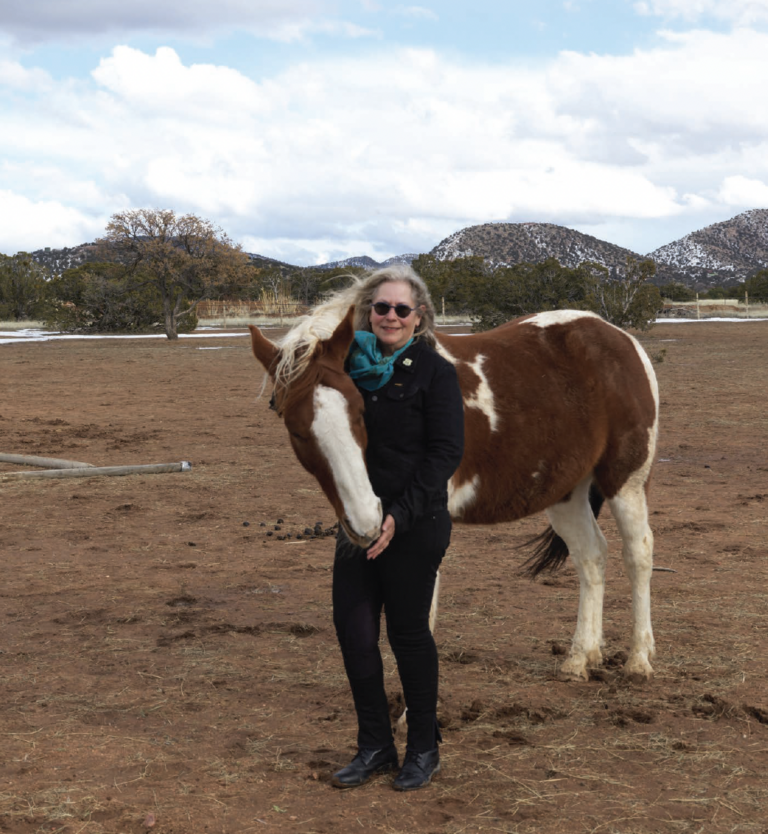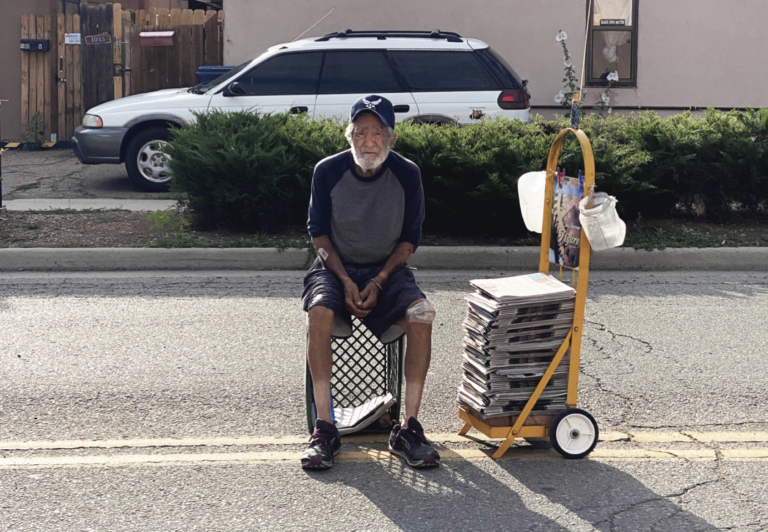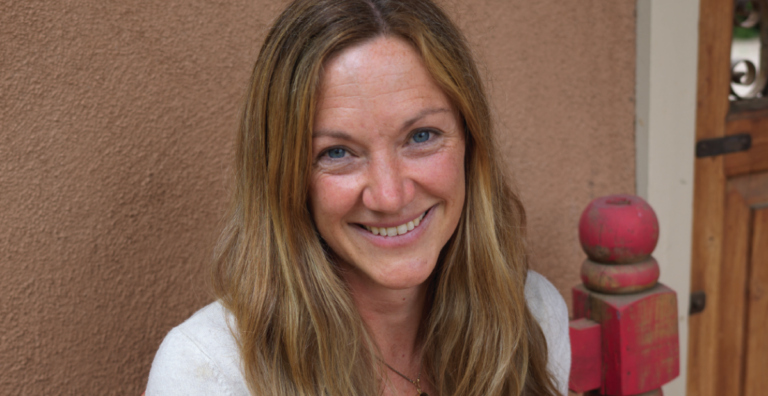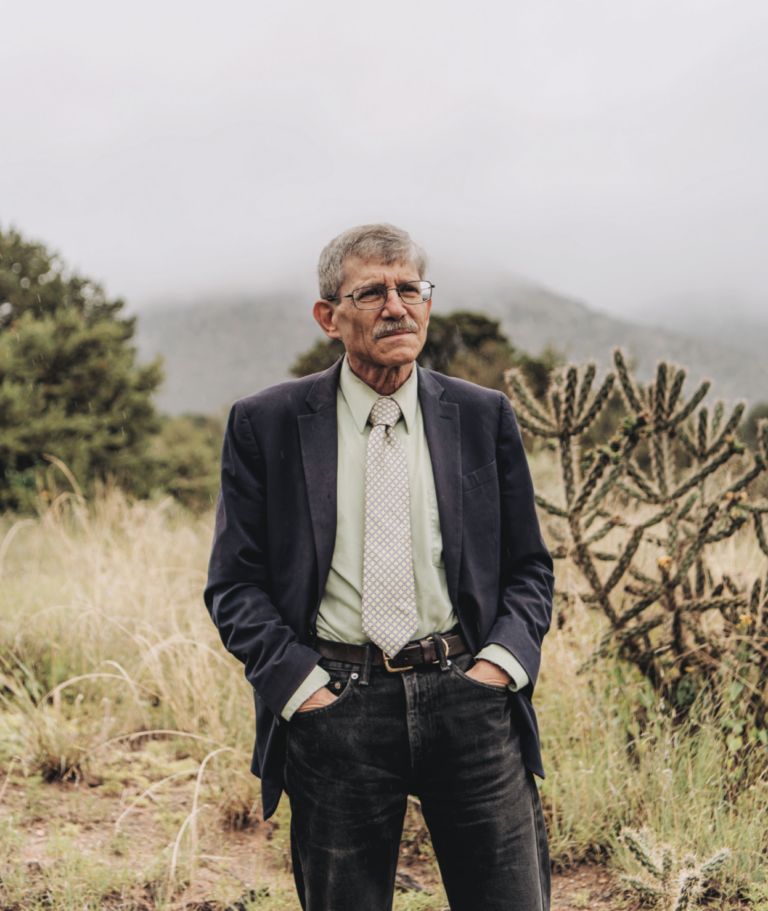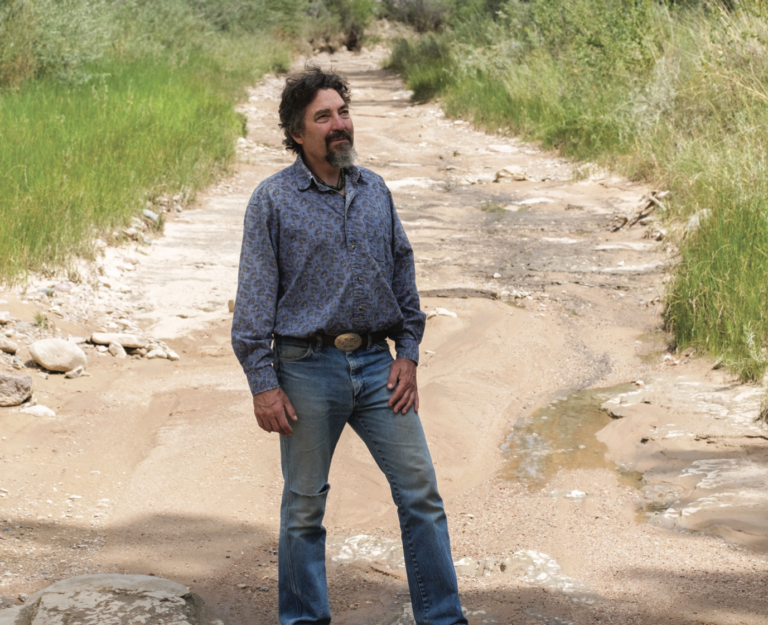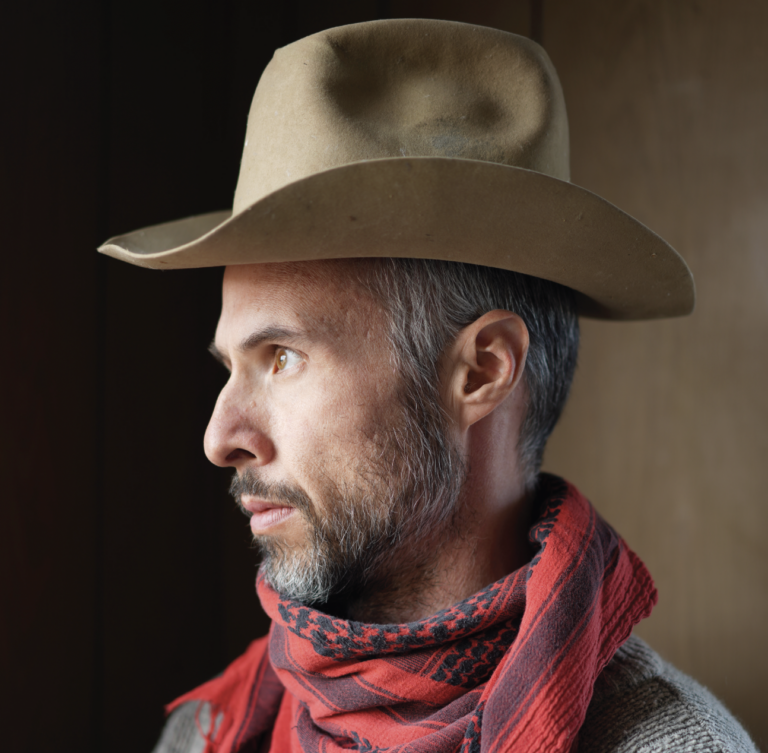THAT’S HOW ROSE DESCRIBES the legendary black-on-black pottery of the Santa Clara Reservation. A duotone version of that same black she applied to Maria, her 1985 El Camino—a piece of junk she found by the side of the road and transformed into art, literally. Maria now travels the U.S., making appearances in museums and galleries, and Rose noted that her next El Camino transformation will be hydrogen-powered. She and her daughter live on the Santa Clara Reservation, and spend their time on clay sculpture, classic cars, and farm work.
At Rhode Island School of Design, I studied relational aesthetics, which is the aesthetics of the everyday. I went to RISD get away from the native world, but eventually realized that it was a huge part of my story, my identity, my context. And it was all related to something I’ve been interested in for a while—indigenous aesthetics, a spiritual aesthetic that’s applied to everything that you do. So, while something like pottery is functional, it also represents your belief system. The nourishment it contains is not just food and drink, it is also aesthetic and spiritual.
Driving is the same way, which is why I went to school at Northern New Mexico College’s Automotive Science Program, to begin to explore relational aesthetics—how do we turn an everyday experience like driving through town into an aesthetic experience?
As a teenager in Española, we’d drive through town and see all of these beautiful, amazing cars. Española is the lowrider capital of the world. It has more lowriders per capita than Orange County.
Talk about relational aesthetics! These lowriders…going from one Sonic to the next; it’s performance art. If your house is a wreck, if it’s got broken windows or is falling down, it’s OK if you have a nice car in the yard. The car is a source of self-worth. If your life is falling apart but you can drive through town with your head held high, that might just keep you alive.
Maria is a 1985 El Camino. I bought the car for the drivetrain, which I was going to put in another car that I liked more. I actually never liked El Caminos, but my mom was harvesting our corn and asked to use it since it had a bed and was low…perfect for harvesting. A long time ago, we would make a pot or vessel and carry it on our head. When we filled the car with corn and beans and watermelons and squash, I realized it was a vessel. Maria was a postmodern indigenous vessel!
Every pueblo has its aesthetic based on place…a spirituality based on an ancestral relationship to place. Whether you’re Northern Pueblo, Southern Pueblo, Hopi, Navajo, Northern Plains, Southern Plains, Woodlands, all of the aesthetics of those communities are very much influenced by place. Historically, Santa Clara pots have a deep, dark, polished style, one that’s pretty serious. I call it “gangster.” The aesthetic is hard, because living in the high desert is harsh. It’s raw, and beautiful. Perfect for the El Camino.
All my work is self-portraits. I mean, I can’t tell anyone else’s stories, right? I make tons and tons of copies of myself to try and figure myself out. And then it hit me that Maria is part of me. I always thought, “She’s way too cool. She can’t be,” but she wouldn’t have come from me if she wasn’t a part of who I am. That car is dripping with my heart, but I’m still struggling to accept that part of me. I’m still learning.
Claim your center. Find yourself there, and honor it. Then you will always have yourself. As long as you have your center, your self, you are empowered.
When it comes to the clay, its about my respect and humility, and about maintaining our relationship to earth. That respect and humility is about the natural lineage of the consciousness of our relationship to the earth. What you grow your food in, the mud you build your house with, or the pottery that you use to nourish yourself with food or prayer. You have to respect the clay…have to know it and talk to it. It is affected by how you’re being and how you’re acting. Go to the studio with a bad attitude, and the clay will mess up. If I’m working with metal, the metal doesn’t care about my attitude…doesn’t respond the same way.
Water, too, responds to intention. I studied Masaru Emoto’s The Hidden Messages in Water [Atria Books, 2005]—the idea that its molecular structure is changed by the presence of human consciousness. So it’s the water in the clay that’s responding to the energy in your body. It’s a relationship. As soon as clay is fired and becomes brick, the water is gone. So, an adobe house is actually a living organism, whereas a brick house is not. But the clay, the water, and you…that’s a relationship.
Learn more at rosebsimpson.com
Photo Minesh Bacrania



